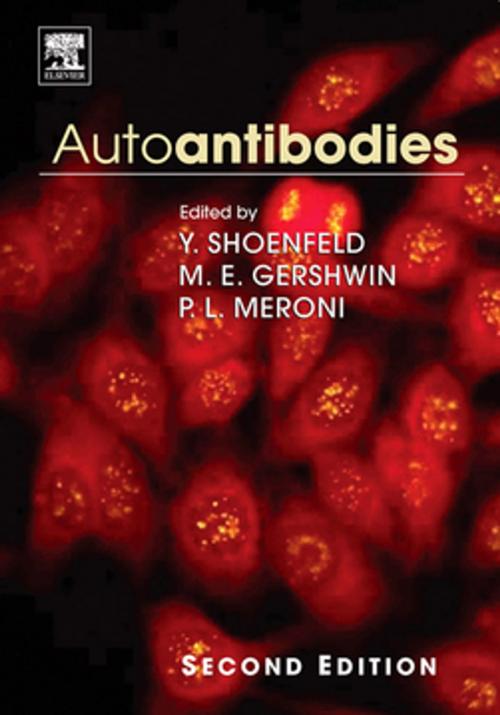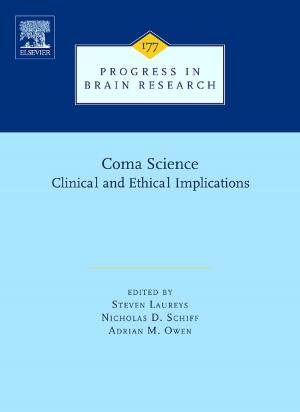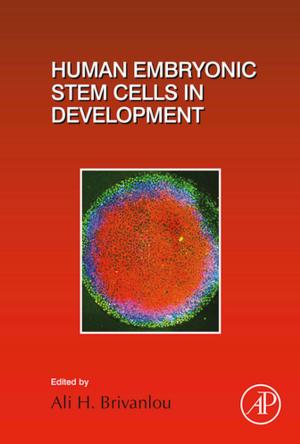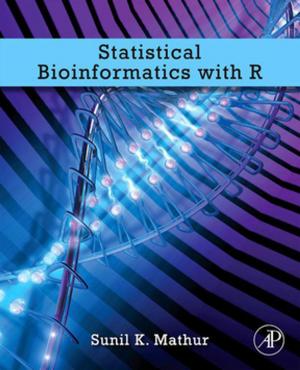| Author: | ISBN: | 9780080467238 | |
| Publisher: | Elsevier Science | Publication: | October 13, 2011 |
| Imprint: | Elsevier Science | Language: | English |
| Author: | |
| ISBN: | 9780080467238 |
| Publisher: | Elsevier Science |
| Publication: | October 13, 2011 |
| Imprint: | Elsevier Science |
| Language: | English |
Autoantibodies was published and presented in November 2006 at the International Congress of Autoimmunity in Sorrento, a small town in Campania, Italy. The Congress also celebrated the 100th anniversary of the first routine test for autoantibodies. An autoantibody is a type of antibody that is produced by the immune system and that fights one or more of a person’s own proteins. These autoantibodies cause autoimmune diseases such as lupus erythematosus.
The authors and editors of this book provide a critical review of autoantibodies and their primary functions. They cite a number of major developments in the field of autoantibodies, including the detection of autoantibodies in which a healthy person is a carrier; the discovery that autoantibodies can be both pathogenic and protective in some cases; and the development of a device that will help monitor and detect a specific autoantibody using a small amount of serum and proteomic arrays. Aside from the pathogenic and protective autoantibodies, the book also discusses irrelevant autoantibodies, as these may be relevant for future research. It also addresses the importance of the autoantibodies in a person’s body.
Clinical physicians, as well as scientists interested in the significance of autoantibodies in the human body, will find this book relevant. It will also be of interest to those who suffer from an autoimmune disease.
- Incudes and exhaustive list of autoantibodies not covered by other publications
- Short reviews can easily be checked for quick reference information
- Both basic and clinical aspects are covered
Autoantibodies was published and presented in November 2006 at the International Congress of Autoimmunity in Sorrento, a small town in Campania, Italy. The Congress also celebrated the 100th anniversary of the first routine test for autoantibodies. An autoantibody is a type of antibody that is produced by the immune system and that fights one or more of a person’s own proteins. These autoantibodies cause autoimmune diseases such as lupus erythematosus.
The authors and editors of this book provide a critical review of autoantibodies and their primary functions. They cite a number of major developments in the field of autoantibodies, including the detection of autoantibodies in which a healthy person is a carrier; the discovery that autoantibodies can be both pathogenic and protective in some cases; and the development of a device that will help monitor and detect a specific autoantibody using a small amount of serum and proteomic arrays. Aside from the pathogenic and protective autoantibodies, the book also discusses irrelevant autoantibodies, as these may be relevant for future research. It also addresses the importance of the autoantibodies in a person’s body.
Clinical physicians, as well as scientists interested in the significance of autoantibodies in the human body, will find this book relevant. It will also be of interest to those who suffer from an autoimmune disease.
- Incudes and exhaustive list of autoantibodies not covered by other publications
- Short reviews can easily be checked for quick reference information
- Both basic and clinical aspects are covered















